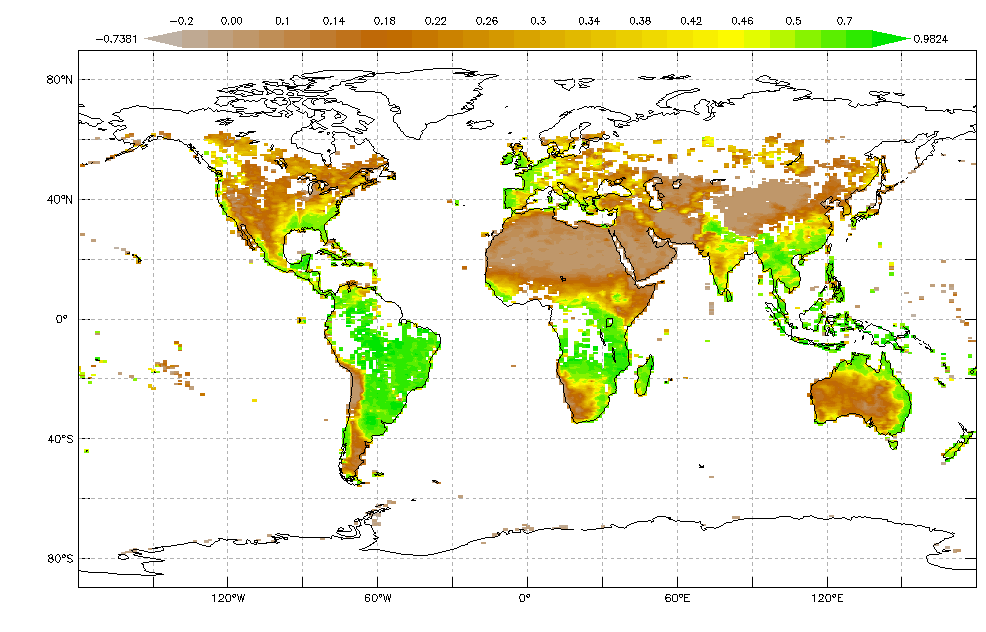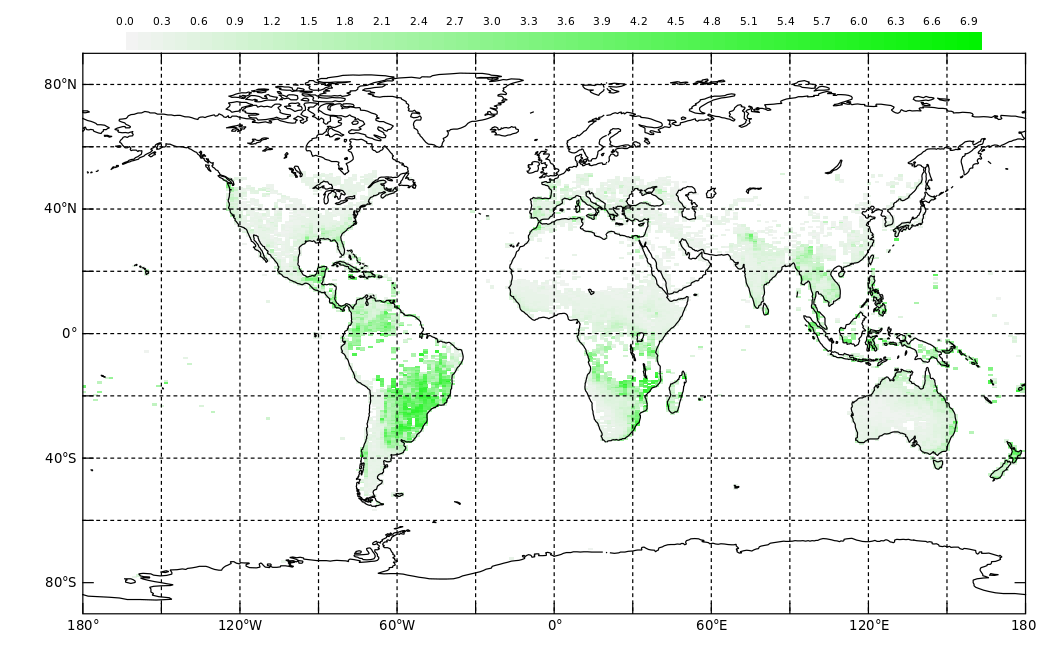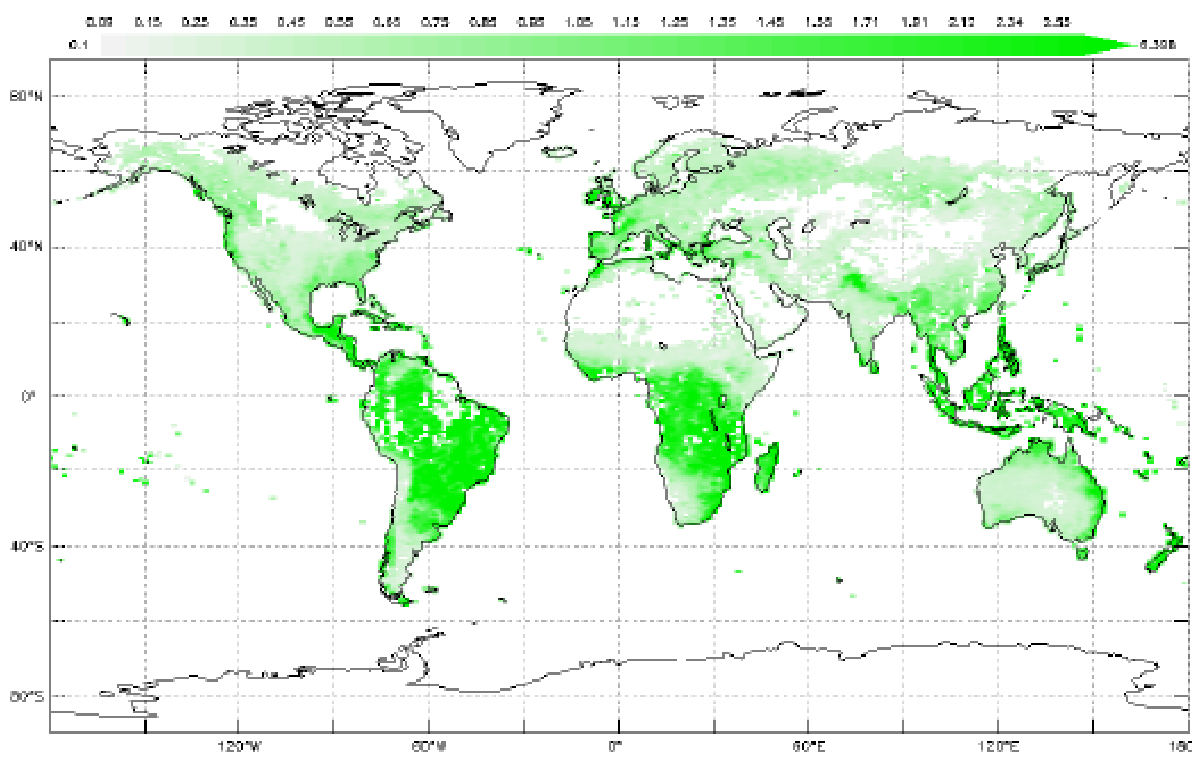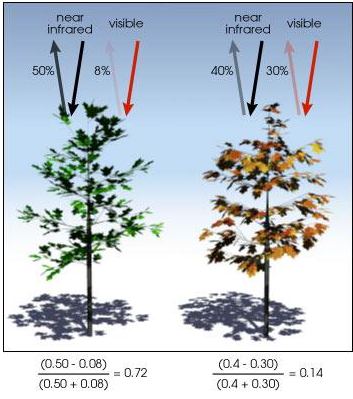Mini Lesson/Activity
Stability and Change: Observing and Measuring Plants
Overview
This mini lesson engages students by watching a NASA video related to plant growth activity around the world using data from the NASA/NOAA Suomi NPP satellite and answering questions on these stability and change relationships.
Student Directions
Review the video, Far Out Flora (2013), and answer the following questions.
Steps:
- Check with your instructor on how to submit your answers.
- What do the terms "stability" and "change" mean as they relate to the Biosphere? Provide examples of times when the Biosphere is stable and when it changes.
- Watch the visualization to see how Earth's plant life changes over the course of a year.
- In this video, what do areas of dark green represent?
- What do areas that are colored light green or tan represent?
- Observe the eastern United States in the beginning of the video. What pattern do you notice in the months of March and April? Why do you think that is?
Background:
The Earth's system exemplifies stability and change. Change, and rates of change, can be observed and quantified over very short or long periods of time. They can also be measured at various spatial scales (e.g., from landscape level to global processes). Understanding the stability and change in Earth processes gives us a more complete understanding of the Earth system.
Across the world, plants can flourish or struggle to grow depending on climate, precipitation, or human activities. By using advanced satellite sensors, scientists can detect the greenness of plants from space. They have gathered a decades-long record of the planet's terrestrial plant life. Recent data from the NASA/NOAA Suomi NPP satellite produced detailed images of plant activity around the world.
Sources:
- Far Out Flora (2013). (2018, June 20). YouTube. Retrieved June 10, 2022, from https://www.youtube.com/watch?v=MzpomWXuhaY
Teacher Note
Teachers, these mini lessons/student activities are perfect "warm up" tasks that can be used as a hook, bell ringer, exit slip, etc. They take less than a class period to complete. Learn more on the "My NASA Data What are Mini Lessons?" page.
Teachers who are interested in receiving the answer key, please complete the Teacher Key Request and Verification Form. We verify that requestors are teachers prior to sending access to the answer keys as we’ve had many students try to pass as teachers to gain access.





